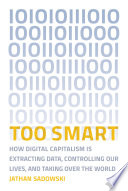

The book explores the paradox that while intelligence is often seen as a key to success, it can also lead to overthinking and indecision. The author argues that highly intelligent individuals may struggle with taking action due to their tendency to analyze every possible outcome. This idea is critical in understanding how intelligence can be both a blessing and a curse in personal and professional settings. The book encourages readers to recognize this paradox and find a balance between analytical thinking and practical action.
Continue readingEmotional intelligence (EQ) is presented as a crucial complement to cognitive intelligence (IQ). The author emphasizes that success is not solely determined by intelligence, but also by the ability to navigate social complexities, manage emotions, and build strong relationships. The book provides insights into how developing EQ can enhance leadership capabilities, improve teamwork, and foster a more collaborative work environment. Readers are encouraged to cultivate their emotional intelligence as a means to achieve both personal and professional success.
Continue readingCreativity is highlighted as a vital component of effective problem-solving. The author argues that intelligent individuals often rely on logical reasoning, which can limit their ability to think outside the box. The book provides strategies for fostering creativity, such as engaging in brainstorming sessions, embracing failure as a learning opportunity, and allowing for divergent thinking. By integrating creative approaches into their problem-solving repertoire, readers can enhance their effectiveness in various domains.
Continue readingThe concept of analysis paralysis is discussed extensively, where intelligent individuals become so overwhelmed by data and options that they fail to make decisions. The author provides practical advice on how to overcome this paralysis, including setting deadlines for decision-making, prioritizing options based on their potential impact, and learning to trust one's instincts. This idea is crucial for anyone in a leadership position or in a fast-paced environment where timely decisions are essential.
Continue readingContinuous learning is presented as a key to staying relevant in an ever-evolving world. The author advocates for a mindset of lifelong learning, where individuals actively seek out new knowledge and experiences. This idea is particularly relevant in the context of technological advancements and changing job markets. The book outlines various ways to foster continuous learning, such as pursuing further education, attending workshops, and engaging in professional networks. Embracing this mindset can lead to personal growth and career advancement.
Continue readingResilience is emphasized as an essential trait for navigating the ups and downs of life and work. The author discusses the importance of developing a resilient mindset, which includes embracing challenges, learning from failures, and maintaining a positive outlook. The book offers strategies for building resilience, such as practicing mindfulness, seeking support from others, and focusing on solutions rather than problems. This idea is vital for anyone looking to thrive in a competitive and often unpredictable environment.
Continue readingThe book examines the relationship between technology and human intelligence, particularly in the context of artificial intelligence and automation. The author discusses how technology can augment human capabilities but also poses challenges related to job displacement and the need for new skills. Readers are encouraged to embrace technology as a tool for enhancing their intelligence and productivity, while also being mindful of the ethical implications and the importance of maintaining human oversight in decision-making processes.
Continue reading